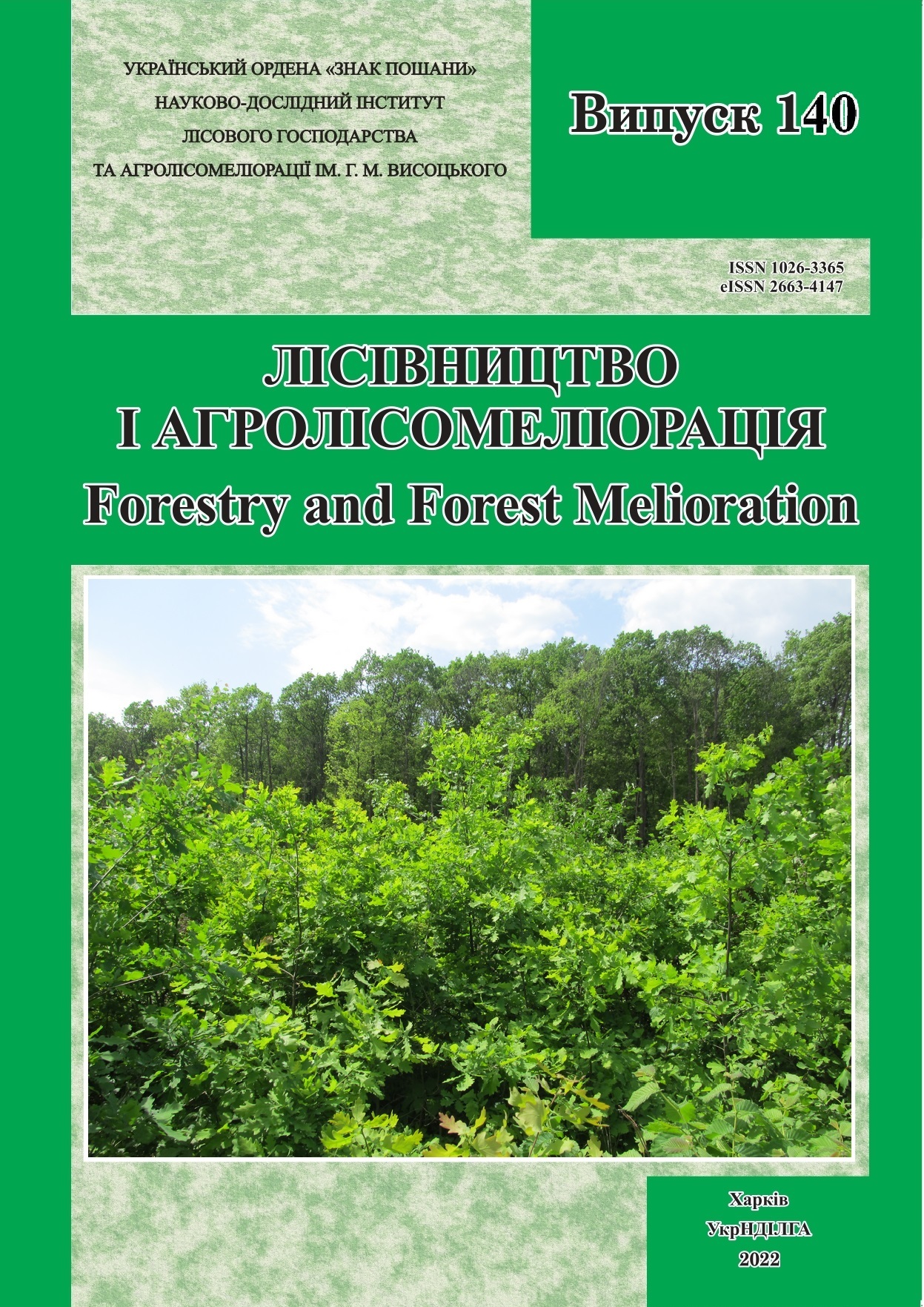Abstract
Introduction
Container-grown seedlings of Scots pine (Pinus sylvestris L.) usually have high quality. Their use for reforestation and afforestation can significantly extend the timelines for establishing stands and significantly increase the survival of planted trees.
The successful growth of containerized pine seedlings depends on the nutrient content of the substrate on which they are grown and its humidity. At the same time, the optimal substrate composition and the growth duration of container pine seedlings have not been thoroughly studied.
The aim of the research was to determine the optimal substrate composition for growing containerized seedlings of Scots pine in multi-cell growing trays.
Materials and Methods
The research on how much the substrate composition influences both biometric indicators (average diameter and average height) and the mass of aboveground and root parts of one-year-old container-grown Scots pine seedlings was conducted in 2021 in the greenhouse of Krasnolymanske Forestry in the Lyman State Forest Enterprise, Donetsk region, Ukraine.
In total, six experimental variants with different substrate composition for growing seedlings were laid out.
Results
The average height of the seedlings ranged from 4.1 to 6.0 cm in different variants. The average diameter of the seedlings was in the range of 0.7–1.2 mm in different variants.
The total weight of the seedlings in the air-dry state in different experimental variants ranged from 0.34 to 1.08 g.
The highest ratio of seedling root and aboveground part masses and the proportion of root mass in the total mass of pine seedlings were recorded in variant with a mixture of peat (60%), sandy soil (20%) and agroperlite (20%) – 0.9 and 47%, respectively. In the control that had a mixture of peat (90%) and sawdust (10%) as a substrate, their values were the lowest – 0.7 and 40%, respectively.
Conclusions
In general, the pine seedlings grown in multi-cell trays with a mixture of 90% peat and 10% agroperlite by volume had the highest values of both biometric indicators (average height and average diameter) and total weight of seedlings in the air-dry state as compared to the control, while the seedlings grown on a mixture of 90% peat and 10% bark by volume showed the lowest values.
The results of the research were taken into account during the development of the draft national standard of Ukraine «Containerised planting material of Scots pine. Specifications».
1 Fig., 4 Tables, 14 Refs.
References
Andreeva, O. Yu., Huzii, A. I., Karchevskyi, R. A. 2016. Some parameters of pine growth in plantations created with potted planting material. Scientific Bulletin of UNFU, 26(3): 9–14 (in Ukrainian).
Buraczyk, W., Szeligowski, H., Aleksandrowicz-Trzci?ska, M., Drozdowski, S., Jakubowski, P. 2012. Growth of mycorrhized and non-mycorrhized Scots pine (Pinus sylvestris L.) seedlings on substrates varying in moisture content and fertility. Sylwan, 156(2): 100–111.
Danylenko, O. M., Yushchyk, V. S., Rumiantsev, M. N., Mostepaniuk, A. A. 2021. Some features of the growth and condition of pine plantations created by different planting material in the South-eastern Forest-steppe of Ukraine. Scientific Bulletin of UNFU, 31(1): 26–29 (in Ukrainian).
Fostad, O., and Pedersen, P. A. 2000. Container-grown tree seedling responses to sodium chloride applications in different substrates. Environmental Pollution, 109(2): 203–10. https://doi.org/10.1016/S0269-7491(99)00266-3
Handbook of agrochemical service employee. 1991. ?Nosok, B. S., Ed.?. Kyiv, Urozhaі, 260 р. (in Ukrainian).
Huz, M. M. and Huz, M. M. 2008. Current state and prospects of forest seedlings cultivation intensification. Scientific Bulletin of UNFU, 18(11): 84–92 (in Ukrainian).
Lakin, G. F. 1990. Biometrics. Moskva, Vysshaya shkola, 352 p. (in Russian).
Lapach, S. N., Chubenco, A. V., Babych, P. N. 2001. Statistical methods in biomedical research using Excel. Kyiv, Morion, 408 p. (in Russian).
Lialin, O. I. 2008. Weight and biometric parameters of two-year-old pine seedlings in containers. Forestry and Forest Melioration, 114: 287–294 (in Ukrainian).
Lialin, O. I., Tarnopilska, О. М., Tkach, L. І., Musienko, S. І., Bondarenko, V. V. 2020. Germination, survival rate and health of Scots pine (Pinus sylvestris L.) grown in containers. Scientific Bulletin of UNFU, 30(2): 44–48 (in Ukrainian).
Mostepaniuk, A. A., Hupal, V. V., Danylenko, O. M. 2018. Selection of the optimal substrate for the growing of containerised pine seedlings in the State Enterprise ‘Kharkiv Forest Research Station’. Kolesnikov readings: materials of the all-Ukrainian Scientific and Practical Conference. Kharkiv, KHNUMН, р. 38–40 (in Ukrainian).
Rinc?na, A., Parlad?b, J., Perab, J. 2005. Effects of ectomycorrhizal inoculation and the type of substrate on mycorrhization, growth and nutrition of containerised Pinus pinea L. seedlings produced in a commercial nursery. Annals of Forest Science, 62(8): 817–822. https://doi.org/10.1051/forest:2005087
Shevchuk, V. V., Terlych, V. G., Borisova, V. V. 2008. Some aspects of pine seedlings growing with protected roof system in the Low Dnieper region. Forestry and Forest Melioration, 114: 295–297 (in Ukrainian).
Szabla, K. 2009. Silvicultural and economic aspects of container-grown seedling production subjected to controlled mycorrhization. Sylwan, 153(4): 253–259.

This work is licensed under a Creative Commons Attribution 4.0 International License.
